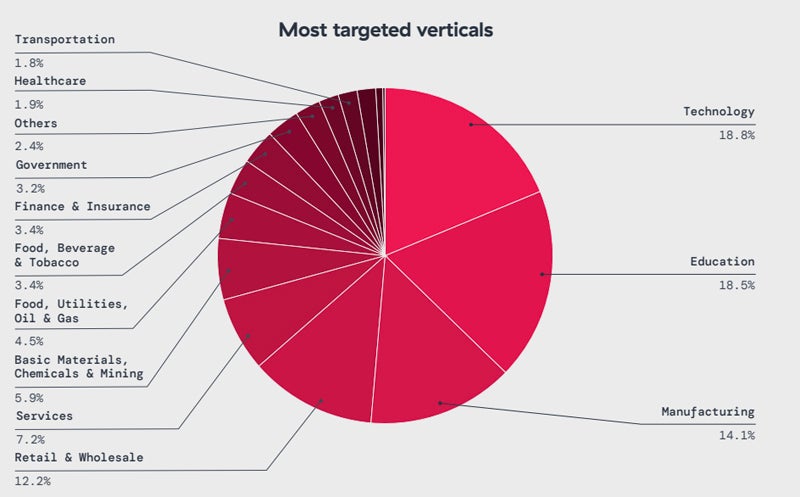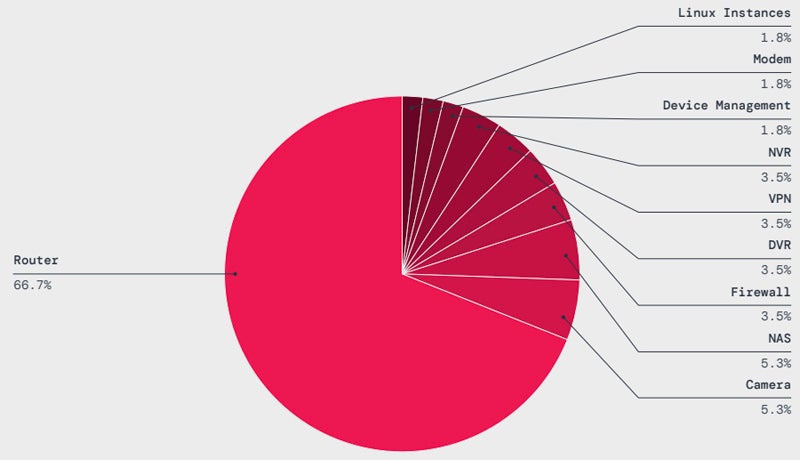A brand new one report from cloud safety firm Zscaler sheds gentle on the rising cell threats on Android working techniques, in addition to IoT and OT gadgets. The findings come as greater than 60% of world web visitors is now generated via cell gadgets and financially oriented cell threats have grown by 111% prior to now yr.
An inventory of cell malware threats
Zscaler’s ThreatLabz noticed a 29% enhance in cell banking malware over the earlier yr, with banking malware representing 20% of the entire Android risk panorama.
Probably the most energetic banking malware households to date embrace:
- Vulturewhich is principally distributed via the Google Play Retailer.
- Hydraunfold by way of phishing messages, web sites and malicious Google Play Retailer apps.
- Ermacdesigned to steal monetary knowledge from banking and pockets apps.
- Anatsaalso called TeaBot
- Copperalso called Octo
- Nexusprimarily concentrating on cryptocurrency accounts
Most of those banking malware file keystrokes, hack credentials and intercept SMS messages to bypass Multi-Issue Authentication.
SEE: Create an Efficient Cybersecurity Consciousness Program (TechRepublic Premium)
Spyware and adware threats rise by greater than 100%
Along with banking malware, spyware and adware threats have additionally grown, with researchers indicating that blocked transactions have elevated by 100% over the earlier yr.
The most typical spyware and adware reported are SpyLoan, SpinOk and SpyNote.
- SpyLoan has the flexibility to steal private knowledge from gadgets, similar to accounts, machine info, name logs, put in apps, calendar occasions, metadata, and extra.
- Spin Okay spyware and adware collects delicate knowledge and recordsdata from varied places on the contaminated machine and exfiltrates the info to an attacker-controlled server.
- SpyNotealso called CypherRat, supplies extra distant entry capabilities in order that the attacker can management the execution of software program on the cell machine.
In response to Zscaler, essentially the most cell malware focused India (28%), the US (27%) and Canada (15%), adopted by South Africa (6%), the Netherlands (5%), Mexico (4%), Nigeria (3%), Brazil (3%), Singapore (3%) and the Philippines (2%).

Sectors affected embrace know-how (18%), training (18%), manufacturing (14%), retail and wholesale (12%) and companies (7%).

Cell malware is distributed by way of varied strategies. One technique consists of utilizing social engineering methods. For instance, Zscaler studies that attackers deployed the Copybara cell malware utilizing voice phishing (vishing) assaults, the place the sufferer obtained voice directions to put in the malware on their Android telephones.
QR code scams are additionally widespread, the place victims are tricked into scanning malicious QR codes that result in malware infections or, in some circumstances, to phishing pages.
Some malware can also be obtainable within the Google Play Retailer. These embrace Joker – which silently subscribes customers to premium companies with out their consent to generate costs – adopted by adware-malware kind and facestealer, a Fb account stealer.

General, regardless of an general decline in Android assaults, financially oriented cell threats have grown by 111% prior to now yr.
IoT and OT threats
Web of Issues and Operational Know-how environments proceed to develop and are more and more focused by attackers, based on the report. The researchers point out that the variety of IoT gadgets working with it has grown by 37% year-on-year.
IoT malware assaults have grown by 45% prior to now yr, with routers being essentially the most focused kind of machine, with greater than 66% of assaults concentrating on these gadgets. The main malware households hitting IoT gadgets are Mirai (36.3%) and Gafgyt (21.2%). Botnets constructed with this malware on IoT gadgets can be utilized to launch massive Distributed Denial of Service assaults.

By way of geographic distribution, greater than 81% of IoT malware assaults focused the US, adopted by Singapore (5.3%), the UK (2.8%), Germany (2.7%), Canada (2%) and Switzerland (1.6%).

High sectors affected by IoT malware assaults are manufacturing (36.9%), transportation (14.2%), meals, beverage and tobacco (11.1%).
On the OT aspect, 50% of gadgets in lots of deployments are working legacy end-of-life working techniques. Protocols susceptible to numerous vulnerabilities are additionally usually uncovered in OT environments, similar to SMB or WMI.
For instance, ThreatLabz analyzed the OT content material of a large-scale manufacturing group, consisting of greater than 17,000 related OT gadgets throughout greater than 40 totally different places. Every web site contained greater than 500 OT gadgets with end-of-life Microsoft Home windows working techniques, lots of which had identified vulnerabilities.
67% of world visitors to the OT gadgets was unauthorized or blocked.

What is going to the long run seem like?
In response to Zscaler, IoT and OT gadgets will stay main risk vectors, whereas the manufacturing sector will stay a high goal for IoT assaults, together with ransomware.
Zscaler additionally suspects synthetic intelligence will more and more be used to ship high-quality phishing campaigns concentrating on cell customers. Nonetheless, AI will even assist defenders automate crucial capabilities and higher prioritize their efforts.
shield IoT and OT gadgets from cyber assaults
To guard towards threats on IoT and OT gadgets, it’s essential to:
- Gaining visibility on IoT and OT gadgets is a precedence. Organizations should uncover, classify and keep lists of all IoT and OT gadgets used of their complete setting.
- Maintain all techniques and software program updated and patched to forestall it from being compromised by widespread vulnerabilities.
- Community logs should be collected and analyzed. Entry to suspicious person accounts and system occasions ought to be monitored specifically.
- Multi-factor authentication ought to be deployed each time doableand default passwords and accounts ought to be modified or disabled.
- Zero-Belief machine segmentation should be enforced for IoT and OT property decrease knowledge publicity.
shield cell gadgets from cyber assaults
To guard towards threats on cell gadgets, it is very important:
- Set up safety purposes on the gadgets to guard them from malware and doable phishing makes an attempt.
- Any hyperlink that arrives on the cell phone, whatever the software, ought to be scrutinized rigorously. In case of suspicious hyperlink, it shouldn’t be clicked and reported to IT safety personnel.
- Unknown purposes ought to be averted. Additionally, apps ought to by no means be downloaded from third events or untrusted sources.
Corporations must also be cautious of apps that request updates instantly after set up. An app downloaded from the Play Retailer should be the most recent model. If a program requests permission to replace instantly after set up, it ought to be handled as suspicious and will point out malware trying to obtain extra malicious parts.
Disclosure: I work for Pattern Micro, however the opinions expressed on this article are my very own.
========================
AI, IT SOLUTIONS TECHTOKAI.NET

Leave a Reply